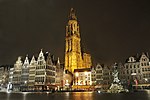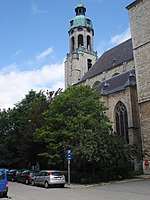Siege of Antwerp (1832)

The siege of Antwerp took place after fighting in the Belgian Revolution ended. On 15 November 1832, the French Armée du Nord under Marshal Gérard began to lay siege to the Dutch troops there under David Chassé. The siege ended on 23 December 1832. The French had agreed with the Belgian rebels that the latter would not participate in the battle.Following the French army's first intervention in 1831, the Dutch withdrew from Belgium but left a garrison in Antwerp Citadel, from which they bombarded the town. The Armée du Nord and its siege specialist François, Baron Haxo took 24 days to take this citadel and return it to Belgium. Leopold I of Belgium gave France several cannons of different calibres as thanks for this action and the French Chamber of Peers offered Gérard an épée d'honneur ("sword of honour"). A monument to the French dead in the siege was sculpted in 1897, but the town of Antwerp refused to take it and it is now in Tournai.
Excerpt from the Wikipedia article Siege of Antwerp (1832) (License: CC BY-SA 3.0, Authors, Images).Siege of Antwerp (1832)
Theodoor Van Rijswijckplaats, Antwerp
Geographical coordinates (GPS) Address Nearby Places Show on map
Geographical coordinates (GPS)
| Latitude | Longitude |
|---|---|
| N 51.2167 ° | E 4.4 ° |
Address
Theodoor Van Rijswijckplaats 4
2000 Antwerp (Antwerp)
Antwerp, Belgium
Open on Google Maps










